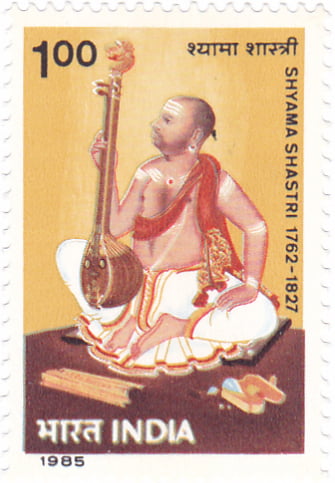Shyama Shastri’s Timeless Melodies
South India has a rich cultural and musical heritage that dates back to several centuries. Among the many great composers who have contributed to the Carnatic music tradition, Shyama Shastri is a name that stands out. Shyama Shastri was a legendary composer who lived during the 18th century and is renowned for his soulful compositions that are still popular among music lovers today. In this article, we will explore the life and musical genius of Shyama Shastri and discover the timeless melodies that he created.
The Musical Genius of South India
Shyama Shastri was born in 1762 in Tiruvarur, a town in Tamil Nadu. He belonged to a family of musicians and was trained in music from a young age by his father, Viswanatha Shastri. Shyama Shastri was a devout Hindu and a follower of the goddess Devi, and this devotion is reflected in many of his compositions. He was known for his mastery of the raga and tala systems, which are the building blocks of Carnatic music.
Shyama Shastri was a humble and simple man who lived a life dedicated to music and spirituality. He did not seek fame or recognition for his work and rarely performed in public. However, his compositions were highly respected by his contemporaries and earned him a place of honor in the Carnatic music tradition. Some of his notable disciples include Tyagaraja and Muttuswami Dikshitar, who were also great composers in their own right.
Despite his short lifespan, Shyama Shastri left behind a rich legacy of music that continues to inspire and captivate audiences today. His compositions are known for their emotional depth and spiritual resonance, and they continue to be an integral part of the Carnatic music repertoire.
Discovering the Timeless Melodies of Shyama Shastri
Shyama Shastri’s compositions are characterized by their intricate melodies, complex rhythms, and profound lyrics. Many of his compositions are in praise of the goddess Devi and reflect his deep devotion to her. Some of his most famous compositions include the Navaratnamalika, a set of nine compositions in nine different ragas, and the Kamalambam Bhajare, a composition in raga Anandabhairavi that is considered to be one of his masterpieces.
One of the unique features of Shyama Shastri’s compositions is his use of the raga Mukhari, which was not commonly used in Carnatic music before his time. His compositions in this raga, such as the Kamakshi Navavarnam, are now considered to be among the greatest works in the Carnatic music tradition.
Shyama Shastri’s compositions are not just musically complex but also emotionally powerful. His compositions in raga Todi, such as the O Jagadamba and the Devi Brova Samayamide, are known for their haunting melodies and deeply moving lyrics. These compositions are often performed in concerts today and continue to evoke a strong emotional response from audiences.
In conclusion, Shyama Shastri was a musical genius whose contributions to the Carnatic music tradition are immeasurable. His timeless melodies continue to inspire and enchant audiences today, and his legacy as a composer and musician lives on. As we celebrate his life and work, let us remember the profound impact that he had on the world of music and the spiritual legacy that he left behind.
Shyama Shastri’s Timeless Melodies
Shyama Shastri’s music is a testament to the rich cultural and musical heritage of South India. His compositions are an important part of the Carnatic music tradition and continue to be performed and appreciated by music lovers around the world. As we celebrate his life and work, we can take inspiration from his deep devotion to music and spirituality and strive to create our own unique contributions to the world.
Image credit
India Post, Government of India, GODL-India, via Wikimedia Commons
